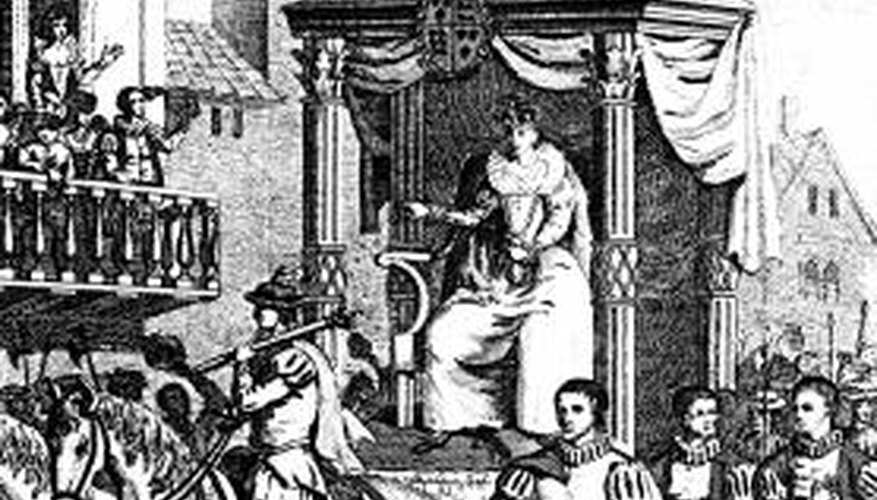In the early years of the reign of Elizabeth I (1558-1603), most horse-drawn vehicles were clumsy wagons, basically just open platforms with wheels for hauling heavy goods short distances. Roads were bad to nonexistent, and the most efficient and comfortable way to travel was by water. On land, commoners walked while the gentry and nobility rode horseback or were carried in horse litters.
A New Development
In 1564, a man named Guilliam Boonen came over from Holland with a new idea in personal transportation -- a closed coach with spring suspension so that a passenger would not be beaten half to death by his "ride," of which the great queen herself complained, and within 20 years coach-making became a thriving trade.
Elizabeth's Carriages
The coaches Boonen made for the Queen had four wheels and were pulled by two horses. One was apparently much decorated with fine carving and gilding, and ornamented with real ostrich plumes. It was big enough for six persons and could be opened on the sides, which Elizabeth did to allow her subjects to see her as she travelled. It must not have been very comfortable, because the Queen was noted to prefer riding, and used her coaches to carry her furniture, household goods and servants on her royal "progresses" around her realm.
- The coaches Boonen made for the Queen had four wheels and were pulled by two horses.
- It was big enough for six persons and could be opened on the sides, which Elizabeth did to allow her subjects to see her as she travelled.
Everybody Wants One
Even though coaches were used at first for the elderly and sick, and men who rode in them were thought sissies, noble and wealthy ladies adopted them as a mark of social status, much to the disgust of the growing Puritan sect. Enterprising merchants also took them up as a business, and by 1585 they were on their way to becoming public transportation in London and coaching inns were established between cities as stages (stops for changing horses). If keeping a private coach in town was too expensive, one could be hired to carry a family to a party or a patron to the theatre.
The End of an Era
The death of Elizabeth in 1603 coincided with a return of the plague or other epidemic illness, and the increasing use of coaches inside and outside London very likely contributed to its spread by allowing those who has contracted the disease but were not yet symptomatic to move about more freely and spread the infection. The rest of the 17th century would see the development of new types of carriages, such as the hackney, berlin, gig, stagecoach and post-chaise.
